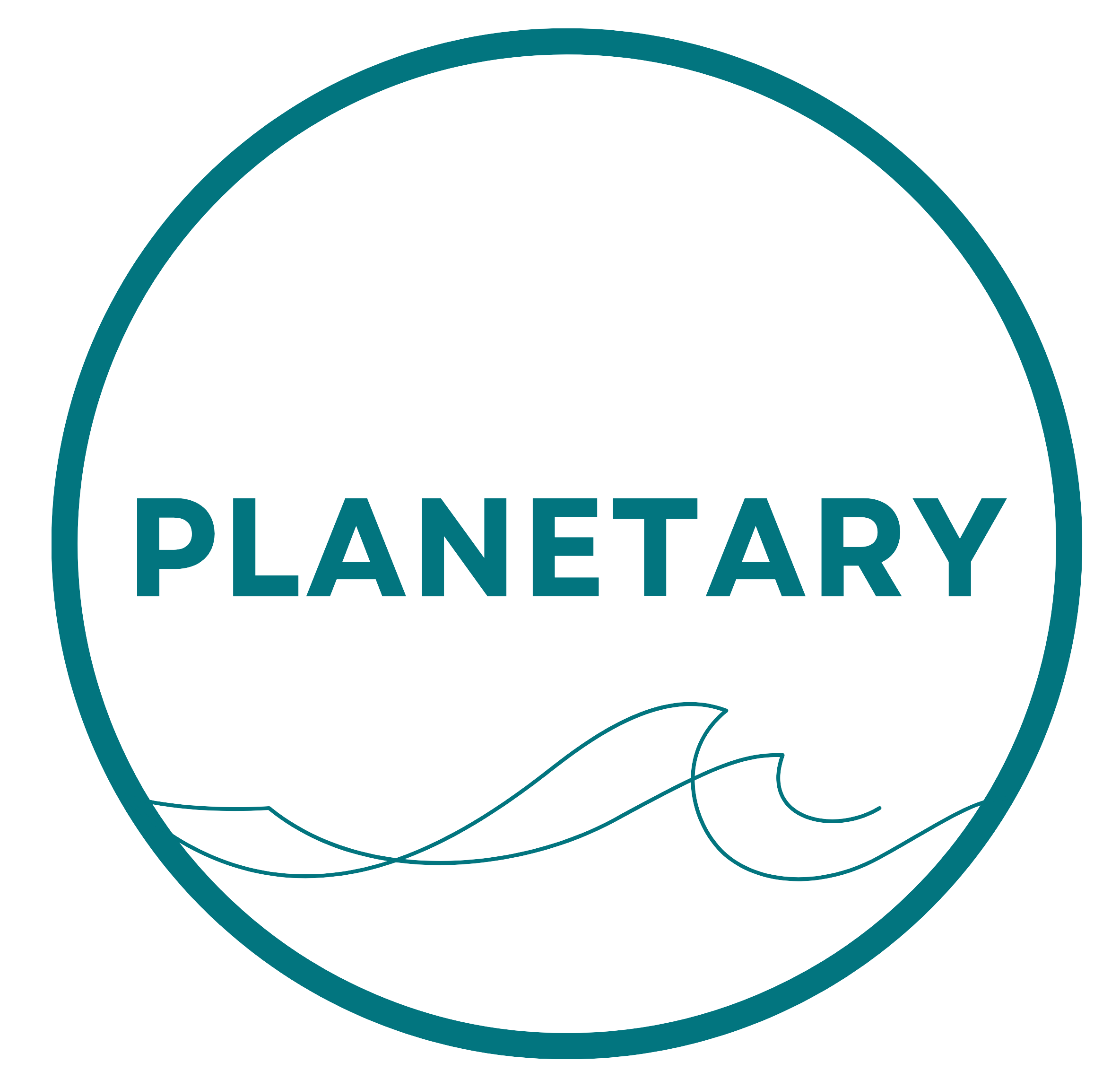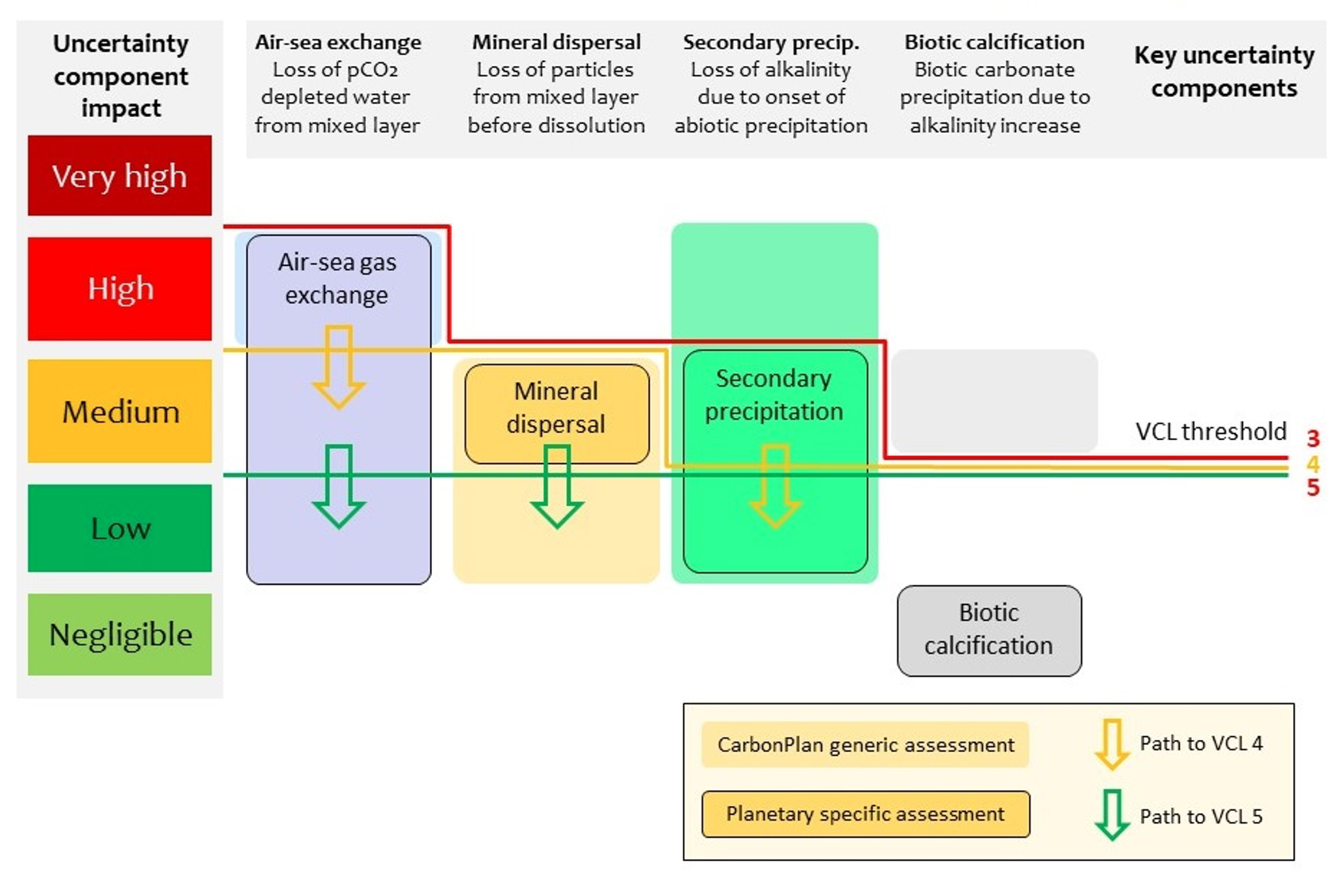CarbonPlan’s Verification Framework (VF) inventorises the uncertainties affecting various carbon dioxide removal (CDR) pathways, assesses the impact of each uncertainty on the quantification of net removals, and categorizes the overall quantification capacity of each method using a Verification Confidence Level (VCL).
In the September 2022 first release of the VF, Ocean Alkalinity Enhancement (OAE) by mineral addition—as a generic method, without reference to any specific company or approach—was assessed as being at VCL 1 (Current quantification capacity is unlikely to establish permanent carbon removal with confidence) to VCL 2 (Current quantification capacity may be able to establish permanent carbon removal occurred). This low confidence level was primarily a consequence of the High (20-50% quantification uncertainty) to Very high impact (>50% uncertainty) assessed for the potential loss of alkalinity through secondary precipitation.
In late 2022, Planetary conducted an internal assessment of its OAE technology against the 9 uncertainty components affecting the OAE (Mineral) pathway. This assessment was discussed with CarbonPlan in December 2022, and the analysis informed CarbonPlan’s V2 (VF V2) update for this pathway, published in April 2023, in which the upper confidence bound was revised from VCL 2 to VCL 3.
The figure above compares the VF V2 generic assessment of the OAE (Mineral) pathway with Planetary’s technology specific assessment. Under the “Key uncertainty components” the lighter shaded boxes with no border indicate the impact range for each component from VF V2, while the overlying, darker shaded boxes indicate Planetary’s internal assessment.
Key to the overall VCL are two uncertainty components assessed in VF V2 as potentially having High impacts, namely the risk of losing alkalinity enhanced water from the ocean mixed layer prior to CO2 equilibration (termed “Air-sea gas exchange” in the VF), and the risk of losing alkalinity through secondary precipitation.
In Planetary’s technology specific review, the potential impact of secondary precipitation is assessed as Medium (5-20% uncertainty), as a result of the slow dissolution of magnesium hydroxide particles, limited pH at saturation (ca. 9.4 in seawater), and rapid dilution, reducing to Low (1-5% uncertainty) with the implementation of additional management controls. This leads to an overall VCL 3 assessment (Current quantification capacity can establish permanent carbon removal occurred, but significant uncertainties remain).
The potential impact of the “air-sea gas exchange” component will be location dependent – potentially Low in areas where the full water column is well mixed by winds and tides throughout the year or where regional ocean models are well validated, or it may be Medium to High where that validation is limited or lacking.
Improvement to VCL 4 (Current quantification capacity can establish permanent carbon removal with confidence, and medium uncertainties remain) is therefore possible in ocean areas where the loss of alkalized water from the mixed layer can be quantified with less than 20% uncertainty together with the implementation of operational controls to reduce the potential impact of alkalinity loss through secondary precipitation to Low.
Advancing Planetary’s OAE to VCL 5 will additionally require the quantification to less than 5% uncertainty of the loss from the mixed layer of both partially dissolved mineral particles through sinking (i.e., the “Mineral dispersal” component), and of alkalinized water through diffusion and advection prior to CO2 equilibration.



